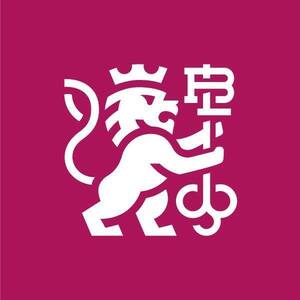Well- and little-known inventions by Ukrainians
What landmark developments were our compatriots involved in
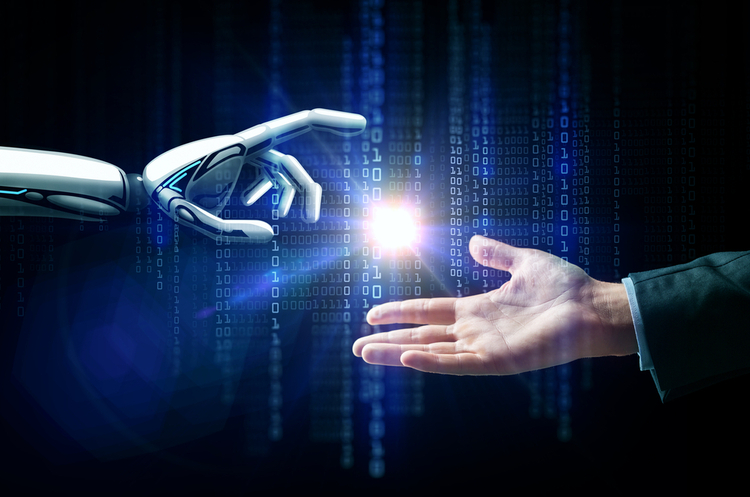
On 12 April, the global community traditionally celebrated the anniversary of the first human space mission. This year, the event was overshadowed by the war in Ukraine and new reports of human losses. Unfortunately, technological progress is reflected not only in life-affirming aspects. Meanwhile, science and technology strive to develop, reaching new heights. And historically, our compatriots have had a hand in many scientific and technological breakthroughs. Helicopter, artificial satellite, X-ray machine, and plague vaccine were all invented by Ukrainians. Mind invites you to discover more about prominent scientists and inventors who worked in Ukraine and abroad.
Inventions by Ukrainians in the late 19th and early 20th centuries
X-ray machine
Inventor – Ivan Puluj
Galician Ivan Pulujwas was a physicist and electrical engineer, inventor, publicist, and translator. In his early years, Ivan wanted to devote himself to serving God, so he entered the Greek Catholic seminary in Vienna. In his free time, the seminarian attended lectures on mathematics, physics and astronomy at the University of Vienna, which decided his future. Ivan Puluj researched Maxwell's theory, studied the properties of cathode rays and X-rays.
14 years before the discovery made by Wilhelm Roentgen, Puluj designed a tube that became the prototype of modern X-ray machines and took the world's first X-ray image of a human skeleton.
Cinema camera
Inventor Joseph Timchenko
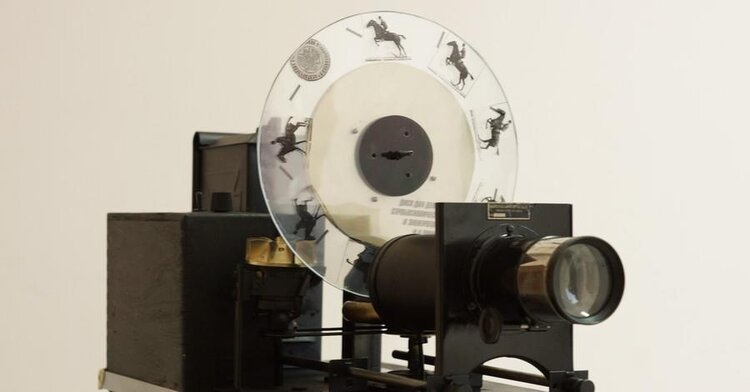
Timchenko's film camera, created on the basis of his drawings
The Lumière brothers are considered to be the inventors of the cinema camera. It was they who patented the Cinematograph, a device that made and showed films.
Two years before the Lumière brothers' invention, a similar device was developed by Joseph Timchenko from Kharkiv Governorate. However, the Odesa Da Vinci, as he was called, did not attach much importance to his invention, as he was engaged in more serious things: developing microsurgical instruments, devices for observatories, and measuring equipment for meteorological research.
Joseph was born into a family of serfs. He was educated at the mechanical workshop of Kharkiv University, where his father took him to study.
In 1873, Timchenko moved to Odesa, where he later headed the Odesa University workshop. As for the film camera, Joseph Timchenko worked on it together with physicist Nikolay Liubimov and inventor Michael Freudenberg. They created the slug hopping. In 1893, the developers showed two films shot at the Odesa Hippodrome.
The immunity theory
Co-authored by Ilya Mechnikov
A Ukrainian and French scientist originally from the Kharkiv Province, he won the Nobel Prize in Physiology or Medicine for his work on immunity in collaboration with German scientist Paul Ehrlich.
Ilya Mechnikov worked as a zoologist, microbiologist, pathologist, demographer, gerontologist, philosopher, physician, epidemiologist, and psychoanalyst. The scientist spent twenty years of his life in Odesa.
It was there where in 1886 Ilya Mechnikov established a bacteriological station, where he and his colleagues worked on rabies vaccinations, held training courses for doctors in microbiology and the fight against infectious diseases such as typhus, cholera, tuberculosis, syphilis, and anthrax.
Vaccine against plague and cholera
Inventor – Waldemar Haffkine
Waldemar Haffkine was a Ukrainian, French, Swiss and Indian bacteriologist originally from Odesa. He was expelled from Odesa University for his involvement in the People's Will revolutionary organisation. He invented a cure for cholera in France while working in Mechnikov's laboratory. Since European countries refused to vaccinate, he accepted an invitation from the government of India, where in 1896 he invented a vaccine against plague. He tested the invented vaccines on himself. Thanks to Haffkine, more than 4 million people were vaccinated in India. For this, the scientist was appointed the country's chief bacteriologist and director of the Plague Laboratory in Bombay.
Local immunisation
Inventor – Alexandre Besredka
Alexandre Besredka, a microbiologist and immunologist from Odesa, Doctor of Medicine, a student and co-worker of Ilya Mechnikov. In 1897, the scientist emigrated to France due to pressure from the russian authorities, whose officials suggested that he renounce Judaism and convert to Christianity in order to make a career.
Besredka was the author of the local immunity theory. His discovery was the basis for the first vaccinations against typhoid fever, streptococcal and staphylococcal infections, dysentery, cholera, and anthrax.
Ukrainian inventions in the mid-20th century
Helicopter
Inventor – Igor Sikorsky
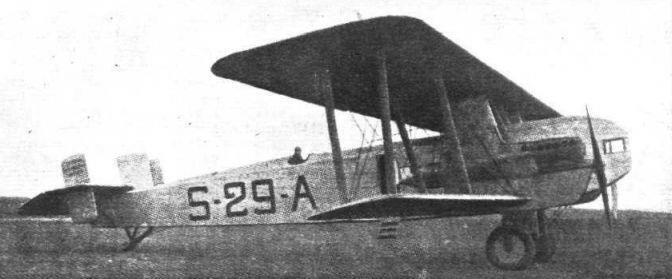
Sikorsky's first cargo and passenger aircraft S-29A
The Kyiv-born aircraft designer was the inventor of the helicopter and multi-engined aircraft. In 1919, Sikorsky emigrated to the United States, where he founded his own company, Sikorsky Aircraft.
In 1924, his first cargo and passenger aircraft, the S-29A, was produced, carrying up to 1900 kg of cargo and not requiring a runway. The last work of the designer was the S-58 helicopter, exploited in 50 countries. In the USSR, Sikorsky's name was banned.
Sikorsky Aircraft is still in operation today and is part of Lockheed Martin, the American military-industrial corporation .
The first kidney transplant
The author of the method was Yuriy Vorony
Yuriy Vorony was a surgeon and Doctor of Medical Science from Poltava Province. While still studying at medical school, Vorony joined the troops subordinate to the Central Rada (Council), the then parliament of Ukraine, and on 16 January 1918 (by the Julian Calendar) took part in the Battle of Kruty.
In 1933, he performed the world's first organ transplant in a living person. The kidney from the deceased donor quickly entered the bloodstream and started working. Although the first patient lived with the new organ for only 48 hours, the operation went down in history, as organ transplants in other countries began 20 years after Vorony's attempt. The Soviet authorities prevented the talented surgeon from continuing his work. During World War II, he found himself in German-occupied territory and was deported abroad. When he returned to Ukraine, he was banned from practising surgery. He was able to return to his favourite profession only after 1950.
Atomic bomb
Inventor – George Bohdan Kistiakowsky
Georgiy (George) Kistiakowsky was an American physicist and chemist who came from Boyarka, an adviser to US President Eisenhower, a participant in the Manhattan Project, a nuclear weapons development programme in the United States, and the head of the explosives department of a classified laboratory. More than 600 engineers and scientists worked under his leadership. In July 1945, the A-bomb was tested in the desert of New Mexico, which was developed by Kistiakowsky's team. The first atomic bomb test in the USSR dates back to 1949.
The Apollo spacecraft
Co-authored by Michael I. Yarymovych
Mykhailo (Michael) Yarymovych is a native of the Ternopil Oblast. An aerospace research engineer, Michael worked on the development of the Apollo spacecraft and led projects to create orbital stations for interplanetary flights at NASA. Since 1965, the scientist has been responsible for all US Air Force defence projects, and since 1996, he has been the head of NATO Research and Technology Organization.
Kondratyuk Route
Inventor – Yuriy Kondratyuk
The route used by American spacecraft to travel to the moon is called the Kondratyuk route in honour of its developer, a scientist-inventor, pioneer of rocketry and space flight theory from Poltava Oblast. His real name was Aleksandr Shergei. After the revolution, Alexander, who fought in the White Guard army, was forced to hide under an assumed name.
Kondratyuk was known for his work The Conquest of Interplanetary Spaces, where he set out the equations of rocket flight and the most energy-efficient trajectories for space travel. The Americans named a Lunar Crater after Kondratyuk.
Rocket engine, intercontinental ballistic missile, artificial Earth satellite
Inventor – Sergiy Korolyov
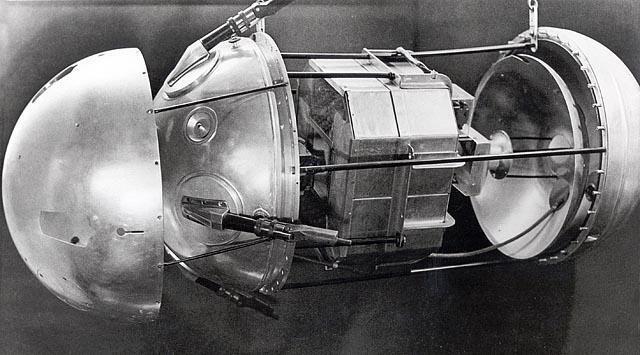
Korolyov's first artificial satellite
Sergiy Korolyov from Zhytomyr was a rocket and space technology designer and founder of cosmonautics. In 1938, Korolyov was arrested for "counter-revolutionary behaviour" and sentenced to 10 years in labour camps with confiscation of property. In 1944, he was released early, but the years of imprisonment undermined his health. During the Second World War, Korolyov worked with a group of imprisoned engineers to create a jet engine for a dive bomber and the TU-2 airplane.
In 1957, he launched the world's first intercontinental ballistic missile, the R-7, and the first artificial satellite in history. From 1958, he headed the USSR's missile programme.
Charpak camera
Inventor – Georges Charpak
Georgiy (Georges) Charpak was a French scientist born in what is now the Rivne Oblast. In 1932, the Charpaks moved to France, where Georges received his education and won recognition. In 1968, he invented a particle detector called the Sharpak camera. This is a multi-wire proportional camera that, in conjunction with a computer, studies the elementary particles of an atom. The device allows to quickly collect and process information and study rare phenomena in the field of nuclear energy. The Charpak camera is used in biology and medicine. The device helped to modify X-rays and reduce radiation exposure by 10 times.
In 1992, Charpak received the Nobel Prize in Physics for his detector.
Inventions by Ukrainians during the years of independence
Flexible supercapacitor
Authors – a group of Lviv Polytechnic scientists
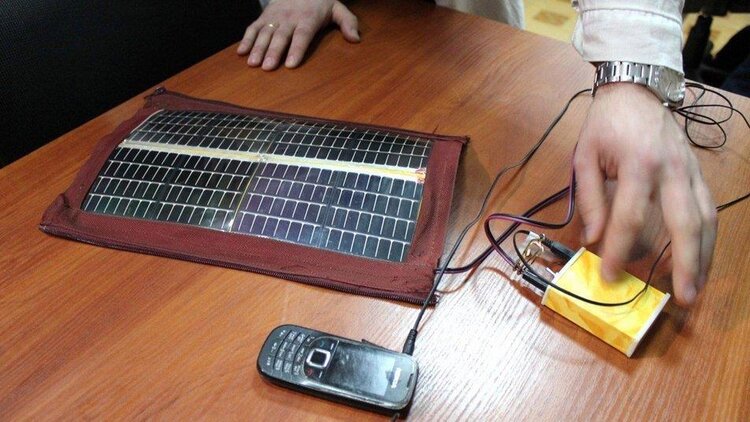
Flexible fabric supercapacitor
Bloodless blood test
Inventor – Anatoliy Malykhin
The invention's official name is "AMP non-invasive blood formula analyser". It was developed by Anatoliy Malykhin, a Kharkivite, Doctor of Medicine, leading researcher at the Institute of Neurology, Psychiatry and Narcology of the National Academy of Medical Sciences of Ukraine. The scientist worked on the invention for 25 years. His development is currently used in China, the United Arab Emirates, Saudi Arabia, and Germany. No patient's blood is required to take a blood test. The five sensors of the device are attached to the neck, armpits, and abdomen. In this way, 131 indicators can be obtained with an accuracy of up to 98%.
Diagnosing cancer at an early stage
Inventor – Yevgen Suslov
Yevgen Suslov from Kyiv is a Doctor of Medical Science and the author of 20 inventions, including the Oncotest. The test makes enables diagnosing cancer at an early stage, when the tumour is small enough to not show itself in any way. The diagnostic accuracy is 95%. A drop of the patient's blood or saliva is enough to detect the disease. Using reagents, the test detects calcium-protein complexes that are secreted by the nuclei of cancer cells. The test also determines at what stage of development the tumour is: growing or decaying.
Another invention of the professor is the diagnosis of tuberculosis. The disease is identified using reagents based on the patient's blood.
Batumin antibiotic
Created by fellows of the Institute of Microbiology and Virology of the National Academy of Sciences
Batumin is an antibiotic that acts on staphylococci. These bacteria are quite resistant to antibiotics and can survive under any conditions. They can stay in the human body for years, but they remind us of themselves when the immune system is weakened.
A team of scientists from the Institute of Microbiology and Virology of the NAS of Ukraine invented an antibiotic that works on all types of staphylococci and has little effect on other bacteria.
Non-invasive glucose meter for diabetics
Inventor – Petro Bobonych
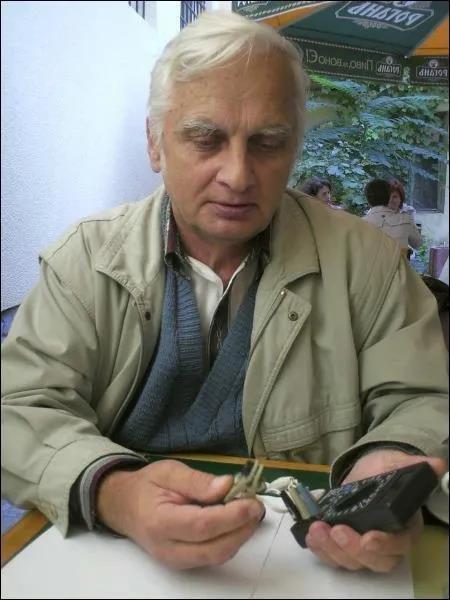
Petro Bobonych with his invention
Petro Bobonych from Transcarpathia is a Ukrainian scientist, Cand. Sc. Physics and Mathematics, Senior Researcher, author of more than 150 scientific articles. He made his first invention in 1976. One of his main inventions is a non-invasive glucose meter that helps diabetics to check their blood sugar without a blood test. Petro Bobonych created this device for his wife, who suffered from diabetes. The device, which is the size of a mobile phone, measures sugar using a clip that is worn on the ear. It is not only easy to use, but also the cheapest. Bobanych gave the drawings and diagrams to scientific journals free of charge so that anyone could create a device for their own use.
Boboanych also developed an optical tomograph for diagnosing breast diseases in women without the use of X-rays.
Surgical suture-zipper
Inventor – Vitaliy Zapeka
We've already written about Vitaliy Zapeka, a writer and serviceman in the Ukrainian Armed Forces. In 2006, this same Vitaliy Zapeka developed a suture that helps to "stitch together" a wound in 10-15 seconds. In the early 1990s, Vitaliy was hospitalised with a leg injury, where he came to the conclusion that the traditional method of wound closure needed to be improved. It took Vitaliy 10 years to develop it, during which time he studied surgical textbooks. The result is a device made of silicone, plastic and adhesive perforated surgical membrane. The suture is glued to the edges of the wound, which can be opened and closed like a zipper if necessary. This suture stops bleeding, eliminates scars and suppuration.
The invention was appraised by the Shalimov Institute, but mass production in Ukraine was not launched.
Device to combat hurricane
Inventor – Viktor Bernatsky

Viktor Bernatsky demonstrates his invention
A scientist at the Faculty of Physics and Technology of Rivne State University has developed a device that can save lives during a hurricane. The design captures wind flows and reduces them.
A few hundred devices are enough to tame the elements. Bernatsky received an award from the European Chamber of Science and Industry for his invention.
Soft tissue electric welding
Inventors from E. O. Paton Institute of Electric Welding
The idea belongs to academician Borys Paton. The method of welding living tissue with high-frequency electric current was developed in 1992-1993. Today, the method is used in Ukraine and abroad. Thanks to welding, less time is required for the operation, the sutures heal more easily, and blood loss during the operation is excluded. The method does not require suture material, staples, clips or stitching machines. The technology can be used in gynaecology, urology, thoracic surgery, ophthalmology, and oncology.
Onipko rotor
Inventor – Oleksiy Onipko
Oleksiy Onipko, a physicist and public activist from Poltava, is a Doctor of Engineering, winner of the State Prize of Ukraine in Science and Technology, author of almost 150 publications and patents.
Onipko's wind turbine is a unique invention in the field of alternative energy. The rotor generates energy even at wind speeds of 0.3 m/s, meaning it can be used anywhere. The device is silent and safe for birds.
In 2013, the invention was awarded the Green Oscar Grand Prix at the international renewable energy competition in Nuremberg.
Water-jet scalpel
Inventor – Viktor Bocharov
Viktor Bocharov is a Doctor of Science who has worked as a draftsman at Antonov Plant for a long time. In 2012, a team of scientists from the National Aviation University and the Aerospace Institute presented a new surgical instrument. The device is based on fluidics, which is widely used in the aviation. The scalpel operates under water pressure. A powerful jet separates tissues and capillaries, leaving the vessels intact. This helps to reduce blood loss, shorten the duration of the operation and shorten the rehabilitation period.
Paper made from fallen leaves
Inventor – Valentyn Frechka
At the age of 17, Valentyn Frechka, a biotechnology student from Transcarpathia, discovered that fallen leaves can and should be processed into paper. In 2017, the technology won an award at the Ministry of Education and Science's Festival of Innovations, and won gold at the International Environmental Olympiad in Kenya and the US Olympics of Geniuses. In 2020, Frechka launched RE-leaf, a startup that produces environmentally friendly bags. It is known that it takes 2.3 tonnes of leaves to produce a tonne of paper. The inventor has ambitious plans, he is going to build a factory that will process the leaves. Valentyn Frechka received €2.5 million from the EU for the construction.
Bionic prosthesis with artificial intelligence
Created by Esper Bionics
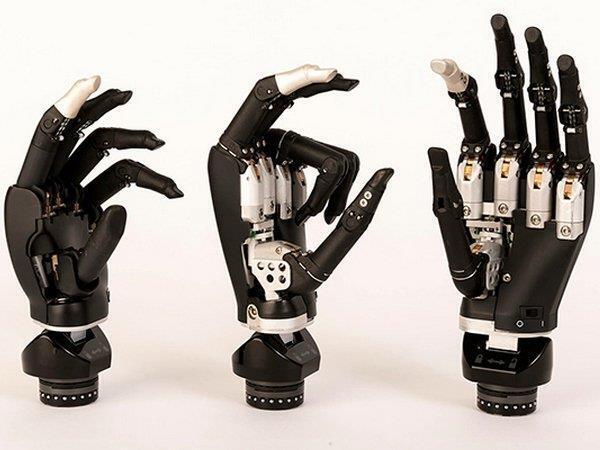
In 2022, this invention was included in Time magazine's list of the best inventions and even made it onto the cover. The founder of the startup, Dmytro Gazda, is a dermatologist by profession. In 2006, Dmytro was doing his surgical internship at an American hospital, where he met a girl who had lost her arm in an accident. This meeting inspired Dmitry to create a prosthesis.
This is the first robotic prosthesis based on artificial intelligence. In the process, artificial intelligence analyses data from 24 wearable sensors and improves itself.
If you have read this article to the end, we hope that means it was useful for you.
We work to ensure that our journalistic and analytical work is of high quality, and we strive to perform it as competently as possible. This also requires financial independence. Support us for only UAH 196 per month.
Become a Mind subscriber for just USD 5 per month and support the development of independent business journalism!
You can unsubscribe at any time in your LIQPAY account or by sending us an email: [email protected]

